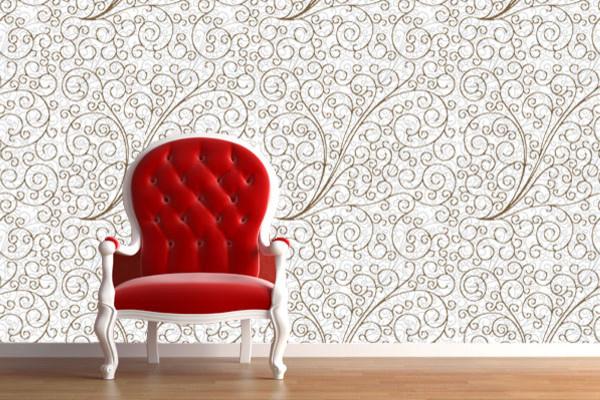Non-woven wallpaper is a very common and beautiful decoration material. It is valued for quality, practicality, long life and perfect appearance. Such wallpaper can be with a picture or with a textured surface for painting. They paste over the walls and ceiling, resulting in an interesting effect that resembles decorative plaster. Sticking wallpaper on a non-woven basis does not cause special difficulties - the canvas glides well on the wall, which allows you to work alone, although it has its own subtleties and rules.
Material calculation and preparation
To correctly determine the required number of wallpapers, you need to measure the height and width of the walls of the room. Calculating how many canvases come out of one roll, you need to add a few centimeters to the height of the room.
High-quality wall preparation is the key to a perfectly glued coating, so the surface should be well plastered. On a clumsy basis, sticking non-woven wallpaper is unacceptable. Even if they stay on the wall, they will lose their appearance and disperse at the joints. After puttying, the surface must be covered with soil and continue work no earlier than after 3 hours.
Gluing process
Wallpapering on a non-woven basis is carried out in several stages:

- Marking the wall is a must. Wallpapering on a non-woven basis starts from the corner. Further moving along the wall. Marks are set with a simple pencil and level.
- Blades should be cut on a clean surface to avoid possible contamination. If the wallpaper is with a pattern, then you need to take into account its selection, so that when combining the stripes, you get a solid surface without interrupting the pattern. Cutting off each new part from the roll, it should be noted its upper cut, so as not to confuse the direction in the process.
- Glue preparation is carried out by diluting the dry mixture with water. After it, you need to leave it briefly so that it thickens.
- The technology for gluing wallpapers of this type involves applying glue only to the wall, which greatly speeds up the process. It should not be too much so that the joints of the paintings do not get too wet. If glue gets on the front of the wallpaper, wipe it with a soft damp sponge. The cloth needs to be glued and smoothed from top to bottom and from the middle to the sides. For this purpose, an ordinary spatula is suitable. Each new joint of a fresh and already pasted cloth needs to be well rolled with a rubber roller. Excess wallpaper is trimmed with a clerical knife and spatula. The internal corners are glued with an overlap, so that in the future, with irregularities, a beautiful combination can be derived.
When buying wallpaper, you need to make sure that all the rolls are from the same batch, since manufacturers do not guarantee an exact match of the shade. Having figured out how to paste the wallpaper on a non-woven basis, it can be done independently without the help of specialists, which will significantly save the family budget.